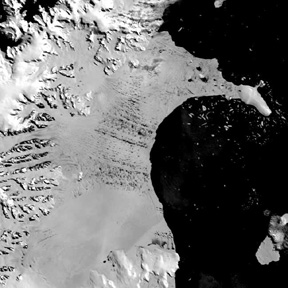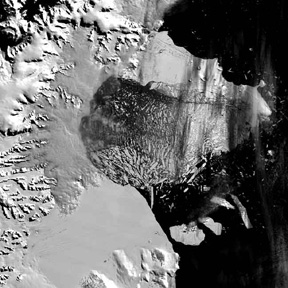Geotimes

Web
Extra Tuesday,
March 19
Antarctic
Ice Shelf Collapses
The northern section of the Larsen B ice shelf in Antarctica has collapsed.
Scientists at the U.S. National Snow and Ice Data Center reported today
that the 650-foot thick ice shelf shattered and separated from the continent,
forming a plume of thousands of icebergs drifting through the Weddell Sea.
Since Jan. 31, the shelf has lost about 1,255 square miles of area. And
over the past five years, it has lost about 40 percent of its original
stable mass. This collapse is the largest single event in a series of ice
shelf retreats in the Antarctic Peninsula over the last 30 years. Geoscientists
think the Larsen B shelf has likely existed since the last major glaciation
12,000 years ago. Links


Recent Moderate Resolution
Imaging Spectroradiometer (MODIS) satellite imagery analyzed at the University
of Colorado's National Snow and Ice Data Center reveals that the northern
section of the Larsen B ice shelf, a large floating ice mass on the eastern
side of the Antarctic Peninsula has collapsed. Between Jan. 31 (left) and
March 5 (right), the ice shelf lost about 1,255 square miles of area. MODIS
image courtesy of NASA's Terra satellite, supplied by Ted Scambos, National
Snow and Ice Data Center, University of Colorado, Boulder.
Lisa M. Pinsker
Read a related Geotimes
Web Extra from February.
Link to media reports about the Larsen B shelf collapse:
National
Snow and Ice Data Center
MSNBC
BBC



